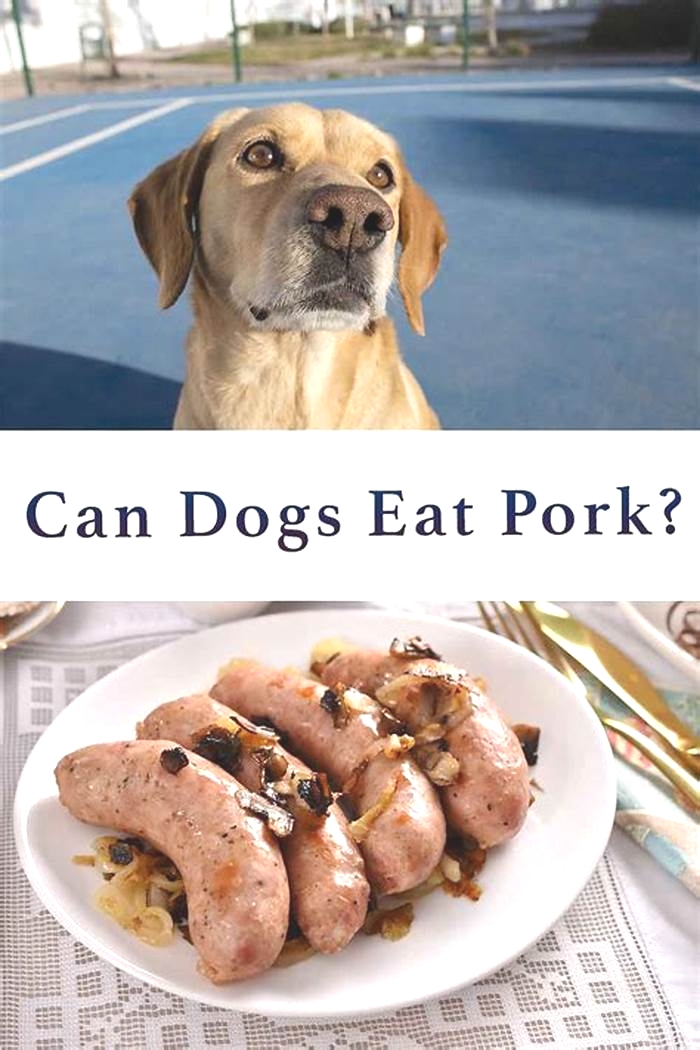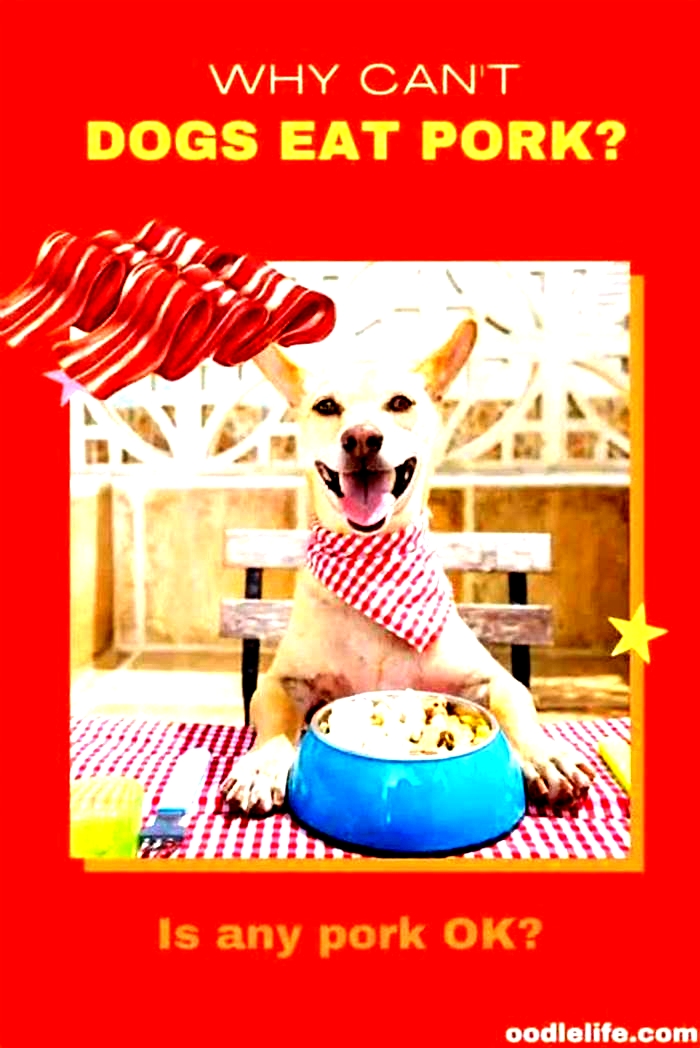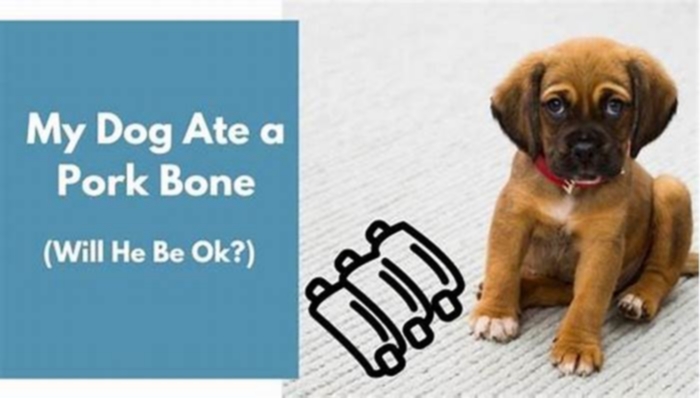Why is pork not used in dog food

Why Is There No Pork Dog Food? Vet-Approved Explanation

The information is current and up-to-date in accordance with the latest veterinarian research.
Learn morePork is a staple here in the United States. People love to barbeque, and pork is usually on the menu, especially during holidays like Memorial Day, Labor Day, and the Fourth of July. When it comes to our canine fur babies, you usually dont see dog food with pork as part of the ingredients. This begs the question: Why is there no pork dog food? Is pork bad for dogs?
Pork used to be considered bad for dogs, but over time, there is no sufficient evidence that supports this. Whats more, its not that pork is bad for dogs but rather how its prepared, and thats where the real danger lies. Some dog food brands are actually adding pork to their recipes because it contains a sufficient amount of protein for dogs, as well as amino acids and thiamine, which is used in cell function.1 However, you rarely see it in dog food because humans love pork, and because of this great love, there is not much left for our canines.
Can Dogs Eat Pork?
Dogs can eat pork as long as its cooked thoroughly, has no spices or seasonings, and its a lean cut of meat to cut down the fat content. According to the American Kennel Club (AKC), people often season pork with seasonings that are toxic to dogs, such as nutmeg, onion powder, and garlic powder. Barbeque sauce is also heavily used with pork, and the ingredients in the sauce itself can be toxic to dogs.
Why Cant I Feed My Dog Raw Pork?
Raw or undercooked pork is not safe for either humans or dogs because you run the risk of contracting a parasite infection known as trichinosis. This is more common in humans rather than in dogs, but dogs can still develop unpleasant symptoms like vomiting, diarrhea, upset stomach, fever, lethargy, inflamed muscles, pain, and stiffness.
Can I Feed My Dog Pork Bones?
We do not recommend feeding your dog bones. Some people love to give their dogs bones, and some dogs may never have an issue. However, it is not advised to give your dog bones because the bone can splinter and cause serious injuries to the intestines and esophagus. If this happens, youre looking at an emergency situation. Bones can also cause mouth and tongue injuries, as well as choking.
Is Pork Safe to Give to Dogs Every Day?
Even though some pet food companies are adding pork to some of their recipes, pork should really only be given in moderation. Chicken is easily digestible for dogs, and unless your dog has a chicken allergy, its best to feed a chicken-based diet instead of pork. Beef, turkey, duck, and venison are also excellent options for a protein source that can be fed daily.
Conclusion
While its safe to feed your dog lean pork without spices or seasonings, it still should only be given in moderation. You should also consult your veterinarian before making a switch to ensure its safe to do so. Also, gradually introduce pork to your dog so that the digestive system can acclimate. Its important to never give your dog processed pork, as processed pork contains a high content of salt.
See also:
Featured Image Credit: RossHelen, Shutterstock
7 Reasons Why There Is No Pork Cat Food
7 Reasons Why There Is No Pork Cat Food
Introduction: Exploring the Elusive Pork in Feline Nutrition
Many pet owners have noticed a specific meat rarely graces the labels of cat food: pork. Cats, with their finicky reputation, have long prompted us to quest for culinary variety to please their palettes. Yet, amidst the poultry, beef, and seafood selections, porks absence is conspicuous. This article delves into understanding why pork is not commonly found in feline diets, discussing dietary needs, health implications, and more. With expert insight, we shed light on pork in the realm of feline nutrition.
Understanding Cats Dietary Needs and Preferences
The unique nutritional landscape for our feline friends is quite specific: they thrive on high protein, moderate fat, and minimal carbohydrates. Lets unpack what fuels our feline friends. Cats are obligate carnivores, meaning their survival pivots on meat consumption, especially for essential amino acids such as taurine. Their dietary needs are not just about survival but also about pleasure. When it comes to taste and texture, cats have particular likings. They seek food that mirrors the profile of their natural prey in both flavor and mouthfeel. This sensory preference influences the commercial cat food market significantly, steering it towards meats that satisfy these instinctual desires.
The Safety and Health Implications of Pork for Cats
Pork isnt a staple in cat food, partially due to safety concerns. Pork can harbor pathogens and parasites like trichinosis, which pose a risk to cat health. Additionally, the high fat content found in pork can lead to obesity and other health complications in cats. When we assess porks nutritional profile, we notice its inadequacy for cats. The comparison of pork to other meats typically used in cat food reveals significant differences, highlighting why pork frequently doesnt make the cut when formulating complete and balanced feline diets.
Porks Popularity and Availability Compared to Other Meats
While pork is a popular meat choice among humans, its use in cat food is much less prevalent. This disparity arises from the historical and economic factors that favor poultry, beef, and fish in pet food production. The cost-effectiveness of these other proteins, thanks to economies of scale, dictates their dominance in the market. Additionally, the supply chain and market availability of these proteins trumpet pork, guiding cat food producers towards more accessible, popular options. Understanding these factors helps explain why pork plays a backseat role in the world of cat food.
Taste Testing and Feline Approval: What Research Says
Cats show a clear preference when it comes to the flavors in their food, and this preference is backed by research and flavor tests. Diving into studies on feline flavor preferences, it becomes apparent that cats might naturally shy away from pork due to their unique taste receptors. Cats do indeed have specific tastes, but whether these gravitate towards pork is a subject of research that yields interesting insights.
When conducting flavor tests, researchers found that cats have distinct tendencies in terms of what they are drawn to. Various proteins are offered to test subjects, and consistently, cats seem to favor certain types of meat over others. Studies that have included pork in the lineup often report that it is not a front-runner in these taste tests which adds to the mystery of why pork isnt a staple in cat foods.
The reason might lie within their biological makeup. Cats have taste receptors that respond to amino acids and certain flavors. Intriguingly, taste receptors on a cats tongue may not respond as vigorously to pork proteins. Pigs and felines share some dietary enzymes which might make the flavor of pork less distinctive or appealing to cats, as they are geared towards sensing proteins that are less prominent in their own biological makeup.
Research into feline palates is an ongoing process; thus far, it suggests that while cats can consume pork without immediate health risks, its simply not their preference. This isnt just about what flavors cats enjoy; its crucial for brands that want to ensure that their products are palatable to their target consumers, our feline friends. Understanding these preferences is key to creating cat food that is not only nutritious but also appealing to cats.
Cultural and Religious Implications of Pork
The cultural and religious stances on pork across various societies impact the pet food industry. Pork, while a staple in many diets, is also a prohibited food in several religions, which affects its global market and influences product development in the pet food sector. These views are significant; they dictate market demand and have a considerable impact on the decisions of pet food manufacturers.
Among the worlds major religions, such as Islam and Judaism, pork is forbidden, influencing not only personal diets but also the products consumers are willing to buy for their pets. This aversion to pork in many cultures leads to lower demand for pork-based products. Furthermore, pet food companies aiming to have a global reach must consider these religious constraints when developing their products.
In addition to religious considerations, there are also regions where pork is not commonly consumed due to cultural preferences or historical reasons. Thus, in these areas, the supply chain for pork may be less developed compared to other types of meat, further dissuading pet food producers from incorporating pork into their offerings.
The interplay between cultural and religious norms and the pet food market is an intricate one. It necessitates nuanced understanding from pet food manufacturers who must navigate these waters carefully to ensure that their products are acceptable in various markets. This further explains why pork is not as prevalent in cat food; its not just about the catsits also about the people who are purchasing their food.
Potential Marketing Challenges in the Pet Food Industry
Marketing pork cat food comes with significant hurdles, given the prevailing consumer perceptions and the challenges in positioning pork as a desirable option for feline diets. Consumer perception is a powerful force and can often determine a products success. When it comes to pork-based cat food, pet food companies have to contend with the various preconceptions and misgivings that the public might hold.
Despite these hindrances, theres a chance for marketers to chart new territories. With effective education and persuasive marketing strategies that highlight the quality and nutritional benefits of pork for cats, it is possible to change consumer attitudes. Clearly communicate that any pork used in cat food is selected carefully and is subject to stringent manufacturing processes to mitigate health risks associated with pork.
Furthermore, as people become more adventurous in their own dietary choices, they may be more open to introducing novel proteins into their pets diets. Companies willing to invest in the research and marketing required to sell pork-based cat food must create compelling narratives to win over both cat owners and their pets.
The key lies in striking the right balance between informing the customer and appealing to their desire to provide the best for their pet. Its about creating a narrative that resonates with pet owners emotions while grounding it in factual evidence about the potential benefits of pork. Due to its nutritional content, pork could theoretically be a beneficial component of a feline diet if processed and supplied correctly.
Pork in dog food
Welcome toAll About Dog Food
Please choose a username
This will be the name that appears next to your comments and reviews. You can change it later via the settings button in the top right where you can also add a profile picture and amend your other account info at any time.
| Advertisement |









